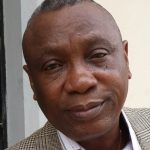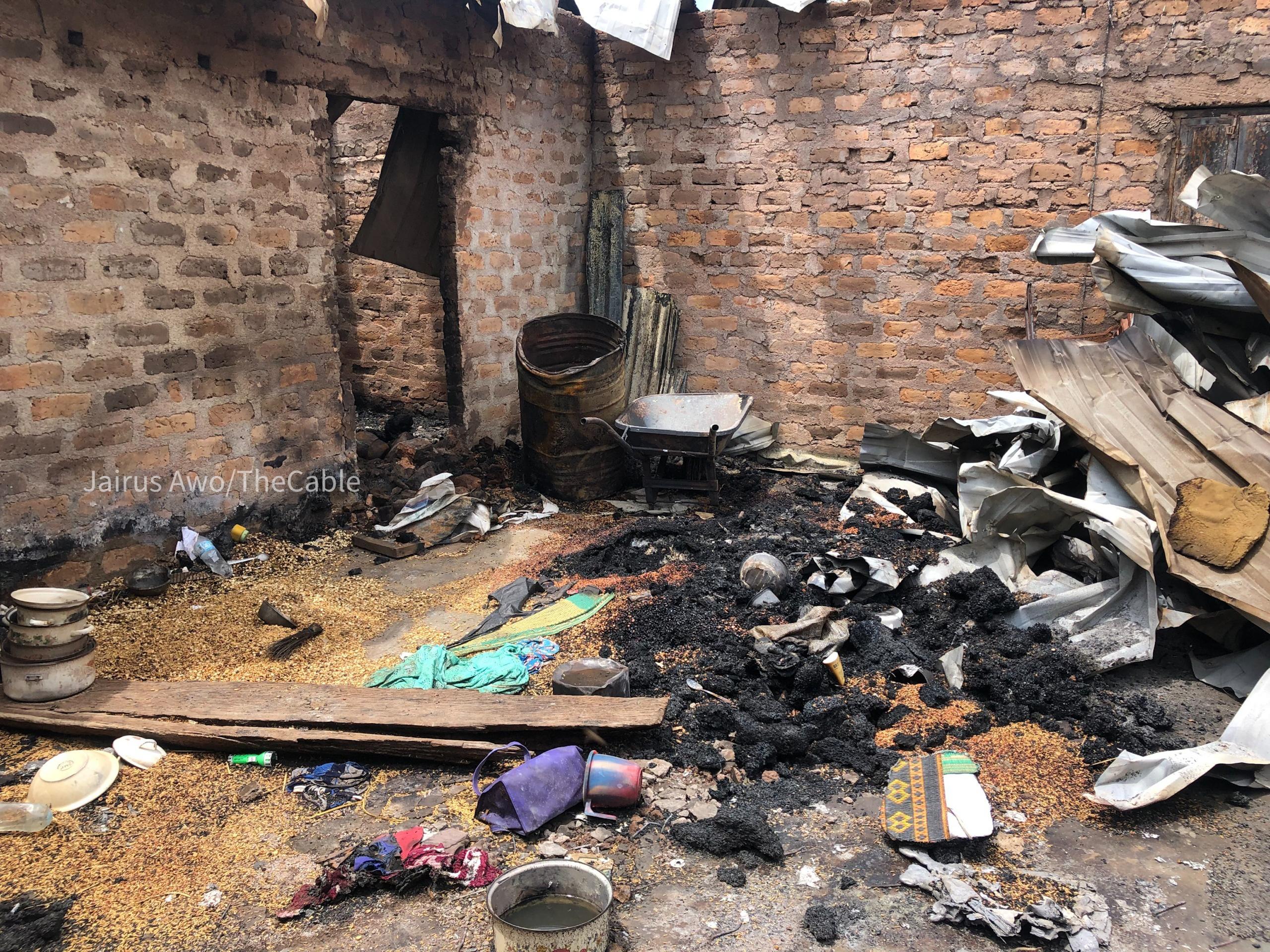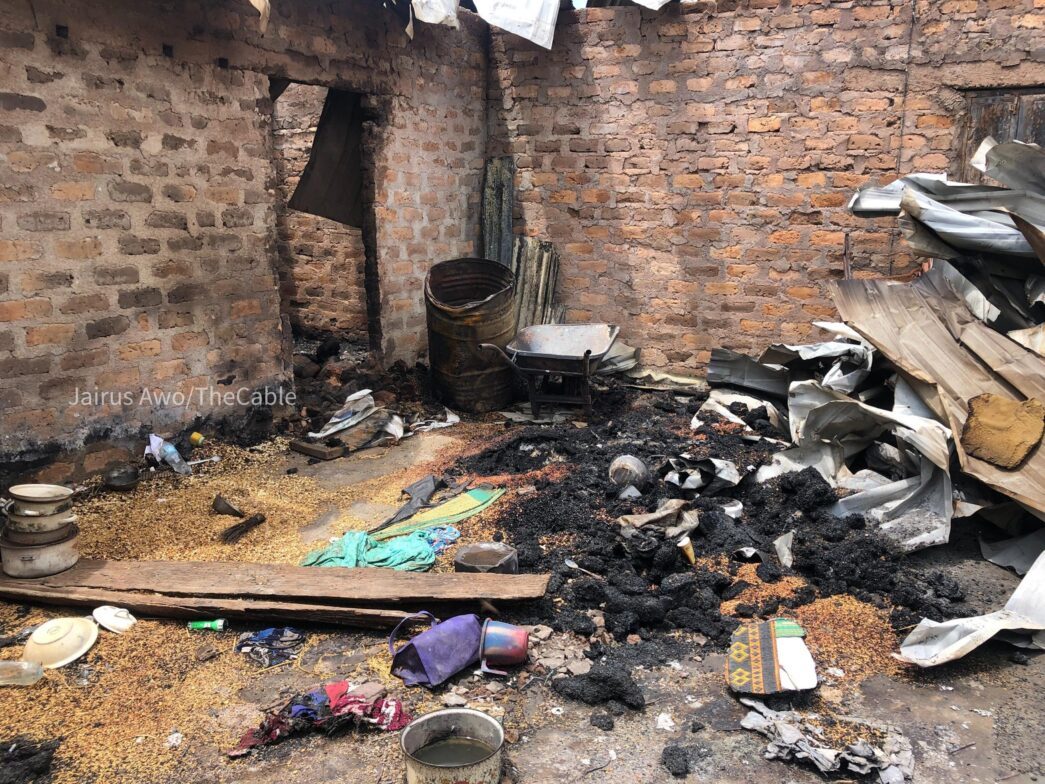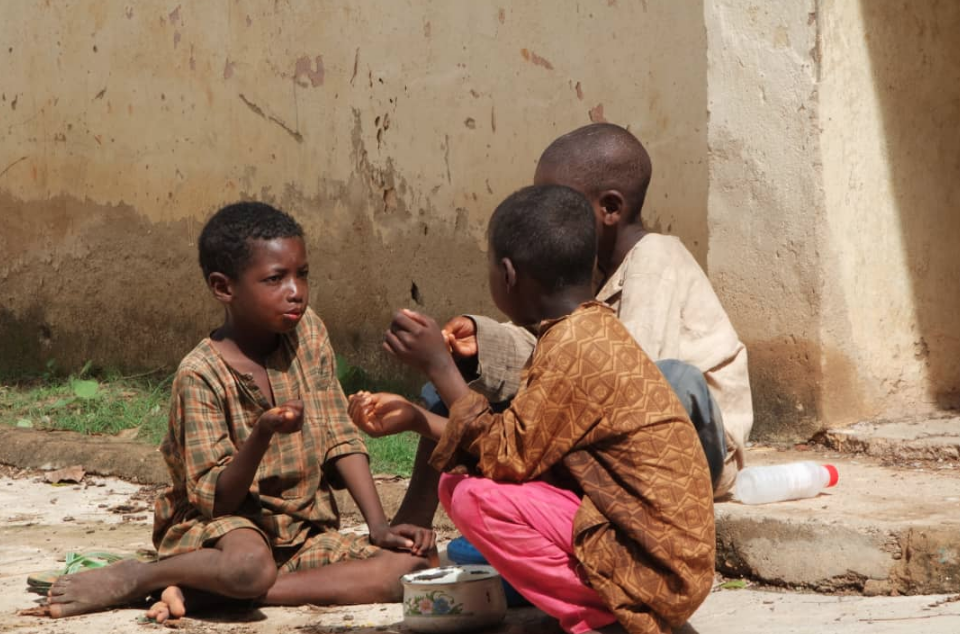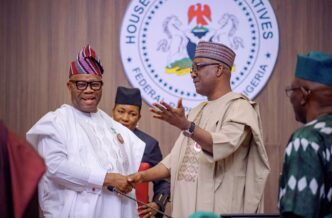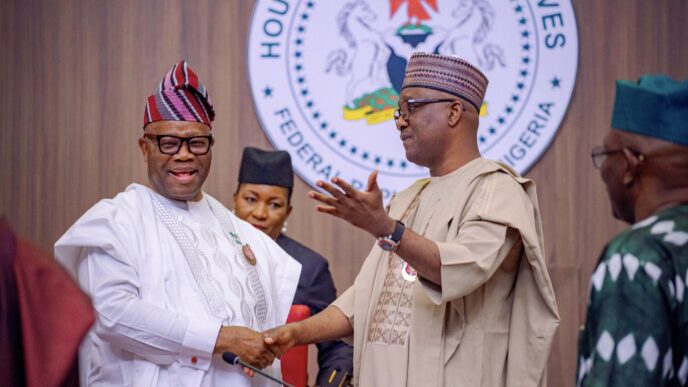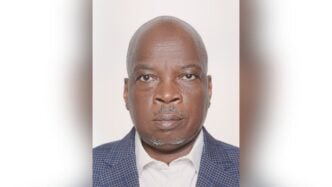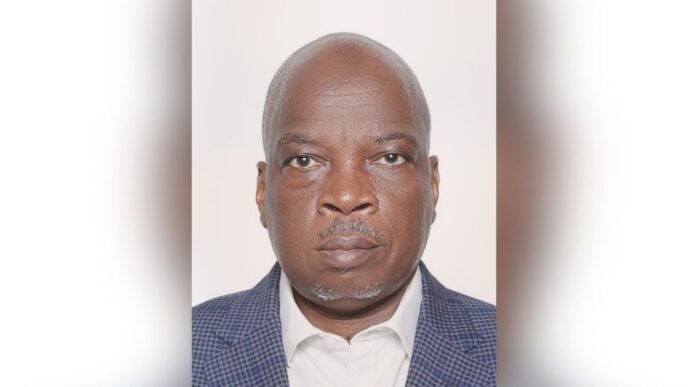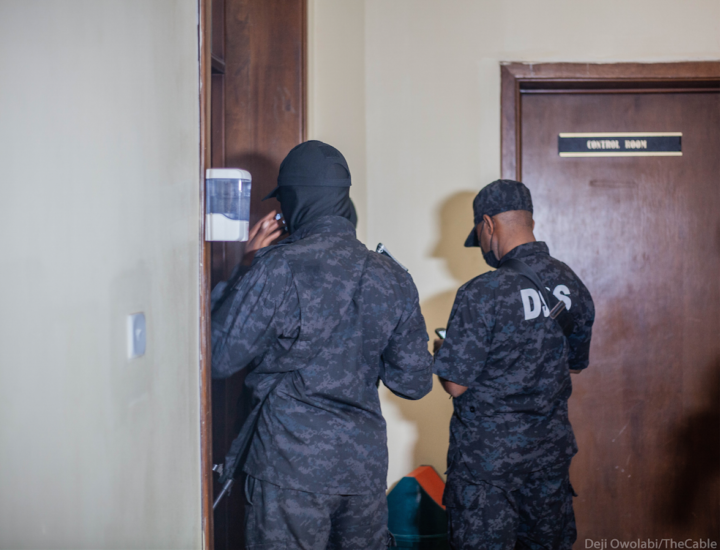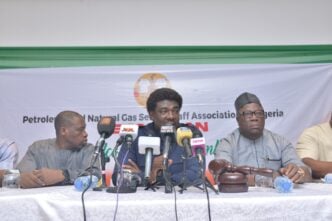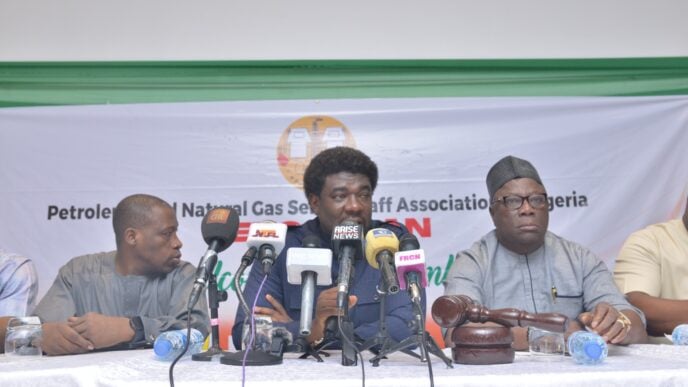I saw Mr. Caleb Manasseh Mutfwang (60), the governor of Plateau, a lawyer-banker and former Chairman of Mangu Local Government Area of Plateau state, lamenting on the television on the invasion of herdsmen to his state. The governor was almost in tears.
The same with Mr. Hyacinth Iormem Alia (59) the governor of Benue state, from Mbangur, Mbadede, Vandeikya local government area of Benue State. Mr. Alia, the Nigerian Catholic Cleric and politician, who is an ex-student at St. Augustine’s Major Seminary in Jos. Incidentally, the concern of the two governors has been lingering even before they were born.
In 2018, I wrote on the crisis. I like to quote what I wrote then. “The Tiv/Fulani crisis in Benue/Plateau State has been on for too long. The older generation passed this crisis to the present one in an unresolved form, and it is getting worse with the years. The present generation must not pass the crisis down too, thereby saddling and punishing the incoming generation with an inherited mayhem. Much blood has been spilled, and particularly those of innocent folks. While many families have been displaced, many homes have equally been destroyed. And many still face a bleak future because of this crisis. It should and must end.”
In 1977, I had special relationship with two gentlemen involved in the crisis. They were Chief Solomon Daushep Lar (4 April 1933 – 9 October 2013) and Chief Joseph Sarwuan Tarka (10 July 1932 – 30 March 1980), both of whom I got to know when I covered the Constituent Assembly in 1977.
Advertisement
Chief Solomon Lar was elected as a councilor to the Langtang Natives Authority in January 1959. On 12 December 1959 he was elected to the Federal Parliament on the platform of United Middle Belt Congress (UMBC). He was reelected in 1964, and from then until 15 January 1966, when General Yakubu Gowon GCFR took power in a coup, Lar was parliamentary secretary to Prime Minister Abubakar Tafawa Balewa. He was also a Junior Minister in the Federal Ministry of establishments.
He became chairman of the board of directors of African Continental Bank, member of the Nigeria Council of Legal Education and a member of the Constituent Assembly (1977–1978). He was a member of the panel chaired by Justice Ayo Irikefe that recommended expanding from 12 to 19 states during the regime of General Murtala Mohammed.
I used to call Chief Solomon Lar in 1977, chairman, because he was the chairman of African Continental Bank- one of the dead glories of the present south-east region, just like National Bank is to the present SOUTH WEST.
Advertisement
His house at Obafemi Awolowo Road Ikoyi was part of my rendezvous. That was at the earlier formation of the Nigeria’s People’s Party (NPP). He was one of the sponsors of Club 19 that eventually gave birth to the NPP at that time.
I asked him at that time, why he did not join the Makama Bida/Shehu Shagari’s group that eventually formed the NPN, he said it would be a taboo if he should do so. He narrated to me the circumstances that led to his father’s death.
In the transition to the Nigerian Fourth Republic Chief Solomon Lar became the first National Chairman of People’s Democratic Party (PDP) in 1998, holding this position until 2002 when he handed over to Chief Barnabas Gemade. In February 2004 he resigned as chairman of the PDP Board of Trustees, handing over to Chief Tony Anenih at a caucus in Abuja.
Notwithstanding, he was a true middle belter.
Advertisement
In November 1979, Governor Solomon Lar then of Plateau state told me in Jos, that the day the middle belt crisis is resolved, that day, the Nigeria crisis would be resolved. He explained that unless you are a middle belter, one can never understand what “we go through in the hands of the Fulani man.”
I was in Obudu, Cross Rivers state recently, for the burial of Elizabeth Agbo Adede (1956-2025), the immediate junior sister of my friend, Senator Musa Adede. I was at the burial along with Colonel Lawan Gwadabe(rtd.), Emmanuel Ibe Kachikwu, Major Bashir Galma (rtd.), Bishop Jato, Alhaji Jani Ibrahim, John Owan and others. From Obudu, enroute Makurdi, I drove to Abuja, to take a flight back to Lagos. When I got to Makurdi that day, I had memories of my earlier life in that city. I visited Makurdi for the first time in 1977, courtesy of Chief Joseph Sarwuan Tarka.
On March 30, this year, it was 45 years that Chief Joseph Sarwuan Tarka (July 10, 1932-March 30, 1980) answered the final call. Unfortunately, the issue that he fought against in the last 24 years of his life – the conquest agenda of the Fulanis – still lingers. During his era, the problem was not about herdsmen but the imperialist policies of the Northern People’s Congress (NPC), dictated by Sir Ahmadu Bello, the Sardauna of Sokoto, who was then the premier of Northern Nigeria.
He was a teacher like his father, Tarka Nanchi. His mother, Sera Ikpu Anyam Tarka, a nurse, died in December 2005 at the age of 95. At an early age, he attended the London Constitutional Conference in 1958. Others like him, who were young and from minority parties, who attended the conference included Mr. H. Biriye, Dr. Okoi Arikpo of the United National Independence Party; Mr. P. Dokotri, also of the United Middle Belt Congress; Dr. Udo Udoma of the United National Independence Party; Mallam Aminu Kano, Mallam Ibrahim Imam, and Dr. S.E. Imoke from Itigidi in Cros River State, who later became a minister and married a pretty princess from Sabongida-Ora in the present Edo State. Dr. Imoke was the father of Senator Liyel Imoke, the former governor of Cross River State.
Advertisement
Chief Tarka got elected into the House of Representatives, representing Jemgbar Constituency, by 34,243 votes. He defeated J.I. Ukume of the NPC who scored 1,191 votes and S.C. Sarma of the National Council of Nigeria and the Cameroons (NCNC), who scored 703 in the 1958 election. He then formed his party, the United Middle Belt Congress, along with Patrick Dokotri, David Obadiah Vreng Lot, Ahmadu Angara, Isaac Shaahu, Edward Kundu Swen and others. He entered into an alliance with the Action Group, led by Chief Obafemi Awolowo. He later entered into another alliance with the Northern Elements Progressive Union (NEPU), made up of Mallam Aminu Kano, Yerima Bello,Abubakar Zukogi, Ahmed Tireda, Gambo Sawaba, Ibrahim Heeban, Saliu Tate, Yahaya Abdullahi, Saliu Nakande, Shehu Sataima, Ali Dakat, Ango Soba, Adamu Gaya, Mallam Lawal Dan Bazua, Abubakar Tambuwal, Babadije Jimeta, Alhaji Tanko Yankassai (spokesman) and others.
The primary aim of Chief Tarka was to fight for the independence of the Tivs from the hands of the Northern Peoples’ Congress. That fight led to the emancipation of the people we now refer to as the Middle Belt. It had snowballed into the major crisis which we now refer to as the Tiv Riots of 1960 to 1964. This was at the time that Alhaji Aliyu Muhammed, the Wazirin Jamaa, who later became secretary to the government of the federation, was sent by Sir Ahmadu Bello as administrator of Tiv land. The Nigerian Army was forced to quell those riots. Senior Military officers, including Major Adewale Ademoyega, Major Christain Anuforo, Lt. Col. Yakubu Pam, Major Timothy Onwuatuegwu, took part in quelling the upheavals. These officers, who were of the 3rd battalion of the Nigerian Army had just returned from Tanzania after cracking down on an internal problem in that country. They later became victims or key players in January 15, 1966 coup. Eventually one of them from the Middle Belt, General Yakubu Gowon, came into power in July 1966 and a few months later in 1967 split the country into 12 states.
Advertisement
General Gowon invited Chief Tarka into his cabinet as minister for communication, only to be succeeded by Brigadier General Rufai Murtala Ramat Mohammad (1938-76), but was later forced out of the cabinet as a result of allegations of corruption made by one of his kinsmen, Chief Godwin Daboh Adzuana (1942-2012).
The Tiv Riots and the independence of the Middle Belt played a key role later in the creation of more states in 1967. The calculation then was that the creation of states would free the Middle Belt from the conquest agenda of the Fulanis. That calculation has proved wrong.
Advertisement
My friendship with Chief Joseph Sarwuan Tarka was a friendship that I valued and still cherish till date. He was a charismatic and true leader of the Tiv people. I was introduced to him by Alhaji Uba Ahmed sometimes in 1977, after which our friendship grew and lasted till, he died in a London hospital on March 30, 1980. Friendship between Journalists and Politicians is inevitable.
I was at the hospital with Senator Uba Ahmed when he died and we accompanied his corpse back to Nigeria in a Nigerian Air Force Hercules plane, courtesy of President Shehu Shagari. I was also at his funeral service in his hometown. Between 1977 till his death, his general complaint was about the plight of his Tiv people. He kept referring to the Tiv Riots and how his people were massacred during the military campaigns that followed it.
Advertisement
Chief Tarka was a persuasive talker not used to exaggeration. At his Ikoyi residence, near the present Ikoyi marriage registry, his house was always full of people. To ensure privacy, he would take me upstairs, where he would narrate tragic stories of the Tiv Riots. He explained to me then that the Tivs were not the aggressors; “How can we be on our land”, he pointed out several times. At the age of twenty-four, he had become a leader, and he died at the age of 48.
The mystery about his political life was that in 1978, he aligned with the National Party of Nigeria (NPN), a party composed largely of those he fought against in the last 20 years of his life. One would have expected that he would align with the Unity Party of Nigeria led by Chief Obafemi Awolowo, who opened the door of opportunities to many tribes’ nationalities in the present Middle Belt. Or that he would align with the Nigerian People’s Party of Chief Solomon Daushep Lar, Chief Paul Wantaregh Unongo, George Baba Hoomkwap, Garba Matta, John Wash Pam, Abubakar Ibrahim, Muhammadu Musa and others.
In the 1979 Benue East Senatorial election, after joining the NPN, he scored 122,622, as against Mr. J.V. Vembeh of the NPP, who scored 15,180 and J.V. Yaji of the UPN who had 5,747. His son, Simeon was also elected on the platform of NPN, Gboko Constituency into the Federal House of Representatives. With his influence, all the NPN candidates in Benue State, including Chief Andrew Abogede, Mr. Suemo Chia, Chief Ameh Ebute and Colonel Adah Ahmadu Ali, all won their senatorial elections.
When he joined the NPN, he was denied the presidential nomination of the party in 1978, the Senate presidency in 1979 and the Senate leadership also in 1979. He was only rewarded with the chairmanship of Senate Committee on Finance and Appropriation, before being flown to London in 1980 for a medical checkup, during which he died.
Unlike now, that an average member of the National Assembly is an instant millionaire because of easy access to public funds, deals, constituency projects and budgets padding, the members of the National Assembly between 1979 and 1983 only lived on salaries and travel allowances.
When Chief Tarka was appointed the Chairman of the finance committee, he did not understand his schedule. Only Senator Uba Ahmed persuaded him from resigning from that committee.
At the Senate, although an NPN Senator, he was more at home in company of notable UPN, NPP and GNPP senators, including Senators Abraham Aderibigbe Adesanya, Mahmud Waziri, Patrick Emeka Echeruo, Kayode Ogunleye, Idrissa Kadi, Buka Sanda, Joseph Ansa, Kunle Oyero, Jonathan Olawole Akinremi Odebiyi, Cornelius Adebayo, Stephen Adebanji Akintoye and, of course, his friend, Senator Jaja Anucha Wachukwu (Aba). He enjoyed his Senate days until his health deteriorated and had to leave for London with his friend, Senator Uba Ahmed (Bauchi North East).
On December 8 1996, General Sanni Abacha created Tarka Local Government out of Gboko Local Government in honour of the memory of Chief Joseph Tarka. Today, the council is one of the 23 local governments in Benue State, and is situated north of Gboko Local Government Area, in the North-East wing of Benue State. The local council shares boundaries with Guma, Gwer, Buruku and Gboko Local Governments.
Benue and Plateau states have produced to date, the highest number of military officers, yet, their states have been terrorized by a tiny army of Fulani herdsmen for the past sixty years also. To the ordinary person, the thinking is that, these officers while serving or retired, would not allow their land to be invaded by the Fulani herdsmen. Apart from General Yakubu Gowon GCFR, who is from Plateau state, there are other outstanding military officers that I have in mind.
Colonel Joseh Agbo Akaahan(April 1937 – May 1968) was Chief of Army Staff from May 1967 until May 1968, when he was killed in a helicopter crash during the Nigerian Civil War. Lieutenant-General Victor Samuel Leonard Malu (15 January 1947 – 9 October 2017) who was Chief of Army Staff (COAS) from 1999 to 2001 and Force Commander of the ECOMOG peace-keeping force in Liberia from 1996 to 1998. He was from Benue state.
I don’t want to mention names of other military officers, both dead or alive who are from Benue or Plateau state.
This present generation should not pass the issue of herdsmen to the coming generation in Benue and Plateau states. Too many lives have been lost.
LinkedIn made several suggestions on resolving community conflict, which I will like to make reference to.
The first step to resolving a community conflict is to understand its nature, causes, and effects. You need to identify who are the parties involved, what are their perspectives, needs, and emotions, and how the conflict impacts them and the community. Such tools such as conflict mapping, stakeholder analysis, or surveys can be used to gather information and data. Personal biases, assumptions, and feelings about the conflict must be aware of. This comprehensive understanding sets the foundation for effective conflict resolution, fostering empathy and informed decision-making to address the underlying issues and promote harmony.
Conflict is common in every setting and the foremost step is identifying the parties involved and giving every person involved a fair hearing. It will be a grave mistake to listen to just one side of the issue and come to a conclusion.
The second step to resolving a community conflict is to communicate effectively with the parties involved. Trust, respect, and rapport must be established with the community involved, listen actively and empathetically to their views and concerns. Opinions and feelings must be clearly, respectfully, and constructively expressed, and avoid blaming, criticizing, or judging others.
Effective communication is crucial during conflict resolution. You should be able to listen well and pay attention to details. Allow parties to establish their grievances, so you can address the issue. Remember emotions are high and try to show empathy during the process. Showing empathy will help you to build trust and rapport with the people. Do not take sides, try to stay objective so you can give constructive criticism during the process.
Again, the best way to resolve a conflict is by giving everyone a chance to speak, fair hearing is key. Listen with empathy to build trust!
The third step to resolving a community conflict is to explore options for solving the problem or meeting the needs of the parties involved. You need to brainstorm and generate as many ideas as possible, without evaluating or rejecting them at first. You should also encourage creativity, innovation, and collaboration among the parties, and look for common ground, shared interests, or mutual benefits. You can use methods such as brainstorming, mind mapping, or SWOT analysis to generate and organize options.
During conflict resolution, we are always looking for a win-win solution, which is good, but that does not always happen. As the mediator, you should explore more options such as reaching an agreement, looking for a middle ground among the parties so that the issue can be addressed. Ask the parties what would best solve their problems after carefully listening to their concerns. This would eventually help you to analyze and identify a workable solution.
The fourth step to resolving a community conflict is to negotiate and agree on a solution or a plan of action. You need to evaluate and compare the options generated in the previous step, and select the ones that are most feasible, acceptable, and beneficial for all parties. You should also negotiate and compromise on the details, roles, responsibilities, and resources involved in implementing the solution or plan. You can use strategies such as ranking, rating, or voting to choose and prioritize options.
The fifth step to resolving a community conflict is to implement and monitor the solution or plan agreed upon in the previous step. You need to execute the actions, tasks, and activities required to achieve the desired outcomes, and monitor the progress, results, and impacts of the solution or plan. You should also communicate and coordinate with the parties involved, and provide feedback, support, and recognition. You can use tools such as action plans, timelines, or indicators to implement and monitor the solution or plan.
The sixth and final step to resolving a community conflict is to evaluate and learn from the experience. You need to assess the effectiveness, efficiency, and sustainability of the solution or plan implemented in the previous step, and identify the strengths, weaknesses, opportunities, and challenges encountered along the way. You should also reflect on the lessons learned, best practices, and areas for improvement for future conflicts.
On June 17, this year, the Tor Tiv V, Professor James Ortese Iorzua Ayatse (69), from Kwande Local Government Area of Benue State, the Paramount Ruler/King of Tiv Nation, told President Bola Tinubu GCFR that the killings in Benue State are not clashes between herders and farmers, but a planned attack aimed at taking over land.
Speaking at a meeting with President Tinubu and stakeholders in Makurdi, the traditional ruler said many people had misunderstood the crisis and wrongly advised Benue citizens to stay calm and live peacefully with their neighbours.
Professor Ayatse said, “We do have grave concerns about the misinformation and misrepresentation of the security crisis in Benue State.
“Your Excellency, it’s not herders-farmers clashes, it’s not communal clashes, it’s not reprisal attacks or skirmishes.”
He described the violence as a “calculated, well-planned, full-scale genocidal invasion and land-grabbing campaign” by herder terrorists and bandits that has lasted for decades.
He added, “Wrong diagnosis will always lead to wrong treatment… We are dealing with something far more sinister than we think. It’s not about learning to live with your neighbours; it is dealing with a war.”
The view of the Tor Tiv was echoed by another group who claimed that they are not northerners.
According to Tivzualumun, “the misconception that the Tiv people and other minority tribes of the Middle Belt belong to “the North” was deliberately created by the British colonial government in conspiracy with Northern elites. This was done after the Tiv and other tribes of the Middle Belt united against the Europeans during slavery and also brought an end to the Islamic Jihad.
The Europeans never succeeded in forcefully entering the region now called the Middle Belt (or Central Nigeria). Instead, they wrongly tagged it as “North Central,” against the will of the people who inhabited the area. The Tiv people arrived in present-day Cameroon and Nigeria (Karagbe) around 6,000 BC, settling on both sides of Ifi i Karagbe (the Benue and Niger Rivers).
This territory stretched from Garoua in present-day Northern Cameroon to Lokoja in present-day Kogi State, Nigeria.
Between 6,000 BC and 1500 AD, the Tiv people firmly established their territory, living in peace and forging friendships with other small tribes that later migrated into the region.
The years 1500–1800 were turbulent due to the transatlantic slave trade. Vulnerable tribes fled from different parts of the country and found refuge in the Middle Belt. The Tiv people, together with their neighbors, stood united against slavery, making the region a safe haven for the oppressed.
The people of the Middle Belt also fought together against the Fulani Jihadists, who had conquered the Hausa states in the far North. The advance of the Jihad came to an end in the Middle Belt, where the resistance proved too strong for the invaders.
After Lagos, the Northern Caliphate, and the Benin Kingdom fell into British hands, the colonialists amalgamated Nigeria in 1914—but they had never conquered the Middle Belt, the largest region geographically.
From 1900 to 1960, the tribes of the Middle Belt resisted colonial rule fiercely, just as they had resisted slavery and Jihad. Because of this defiance, the British excluded them from major political structures.
Northerners and Southerners were used as interpreters, messengers, and administrators, while the Middle Belt endured punishment under the brutal force of machine guns.
With Nigeria’s independence in 1960, the struggle to capture the Middle Belt intensified. The British feared that if recognized as an independent region—like the East or Niger Delta—the Middle Belt would rise to disrupt Nigeria’s balance of power.
Through Islamic leadership and political manipulation, the Northern elites laid claim to the Middle Belt. The British also fueled divisions among the minority tribes, creating mistrust and disunity where once there had been strong solidarity.
Despite all attempts, the people of the Middle Belt continue to reject the false identity of being called Northerners.
We demand recognition of our region by its rightful name: THE MIDDLE BELT (CENTRAL NIGERIA).
The Importance of the Middle Belt- Food Basket: The Middle Belt produces about 70% of Nigeria’s food supply – Population: With over 50 million people, it is the second most populated region in Nigeria – Economy: It has the second-highest purchasing power in the country – Geography: It is the largest region by landmass, covering Plateau, Taraba, Kogi, Nasarawa, Adamawa, Niger, Benue, Kwara, FCT, Southern Bauchi, and Southern Kaduna.
In 1967, just seven years after independence, the Middle Belt was divided:- Gongola State (later Adamawa & Taraba in 1976) was merged into the North East. – Benue-Plateau State (created in 1967) was later split into Benue and Plateau, and subsequently broken into more states.
This division was intentional, designed to weaken the unity and political strength of the Middle Belt.
The Middle Belt was never part of the Northern Caliphate. It was never conquered by the Jihadists who established the Sokoto Caliphate. It should never be called “North Central.”
We are the People of the Middle Belt.
We are Central Nigeria”.
To me, the sentiments expressed by the Tor Tiv and the Tivzualumun may not lead to the solution in resolving the perennial past and present clashes in Benue and Plateau states. More dialogue will be required.
Teniola, a former director at the presidency, wrote from Lagos.
Views expressed by contributors are strictly personal and not of TheCable.
